Pruning delphiniums: simple tips to keep your flowers blooming
Keep on pruning delphiniums over summer and you will reap the benefits with constant flowers to brighten up your plot
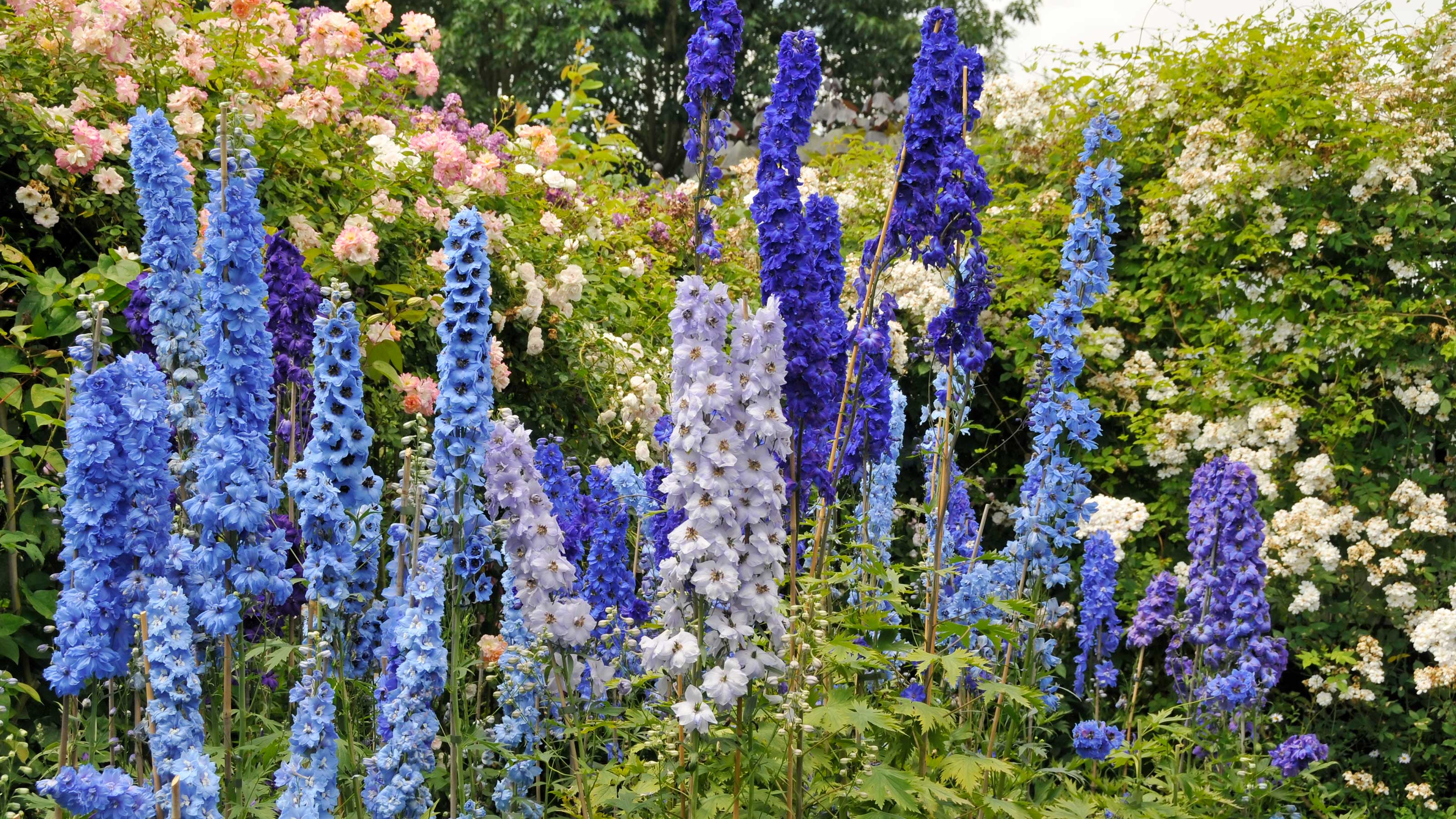

Pruning delphiniums regularly throughout their flowering season is the best way to ensure a wealth of flowers. These beautiful perennials are great for adding height to a bed or the back of a border, with their large spiky leaves making a lovely contrast against the elegant vertical blooms in blue, red, pink or purple.
Pruning them is a key element of delphiniums care as it will keep them looking their best throughout the summer months, plus it can also help to encourage a second flowering later in the season.
What's more, once you've pruned them, you can enjoy the cut flowers as stunning summery bouquets throughout your home.
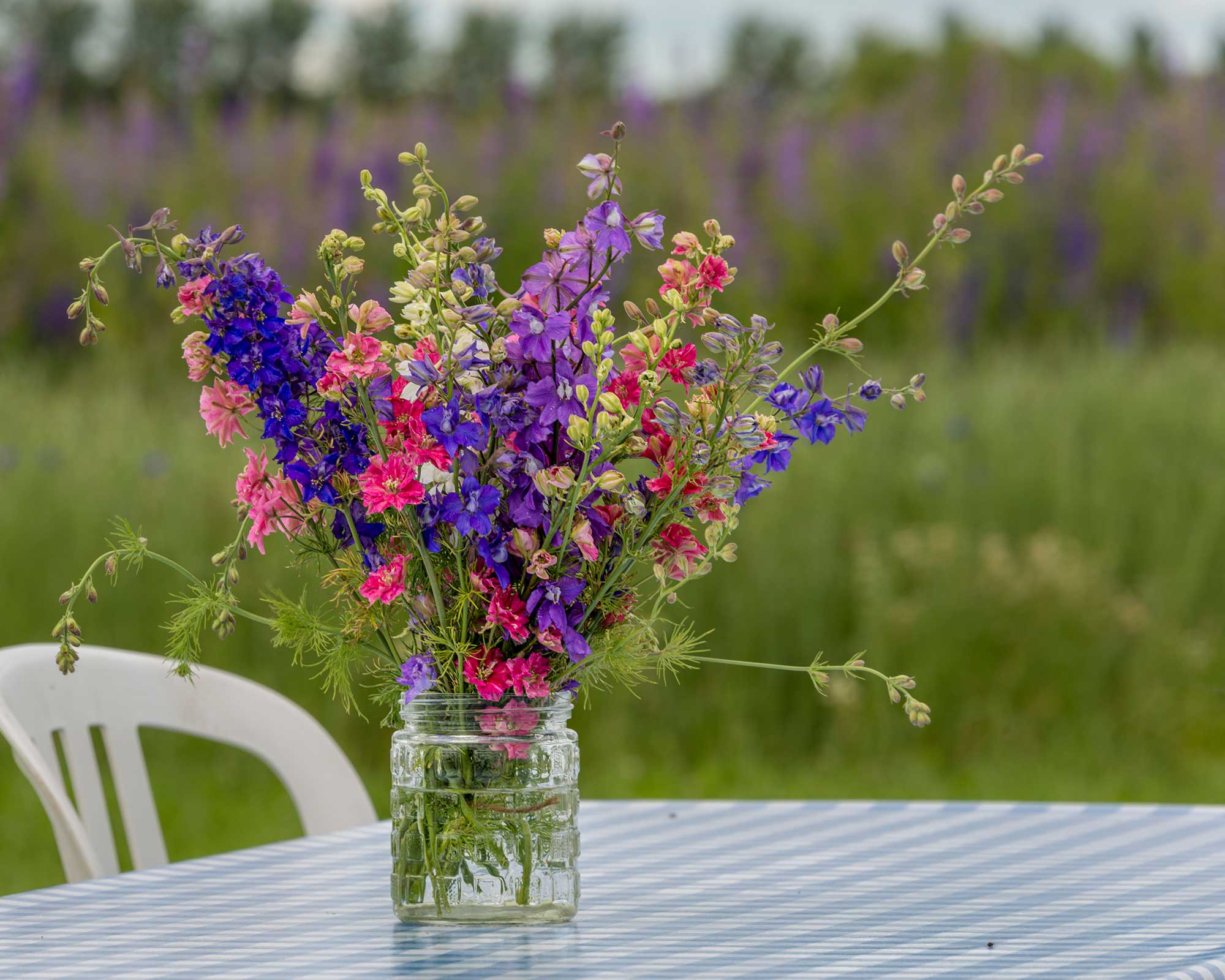
Pruned delphiniums make a wonderful summer table display
When is the best time for pruning delphiniums?
If left to their own devices, all types of delphiniums will grow ever upwards on one long stalk, with a spiky bloom of flowers emerging from its center. The way to avoid this singular flowering – and to encourage plenty of blooms – is by pruning at regular intervals.
As delphiniums tend to flower early in the season, keep a lookout for fading blooms. This is the first indication that they're ready for pruning. If you see side shoots appearing that's another great sign that it's time for some pruning to aid their growth.
If, however, you're keen on the towering style of delphiniums, the RHS says that you can thin out young shoots in the spring. Leaving 5-7 of the strongest shoots will encourage these to climb skyward, creating height instead of sprawling width for your delphiniums.
Remember, delphiniums are toxic so always wear gardening gloves when pruning and deadheading these perennials.
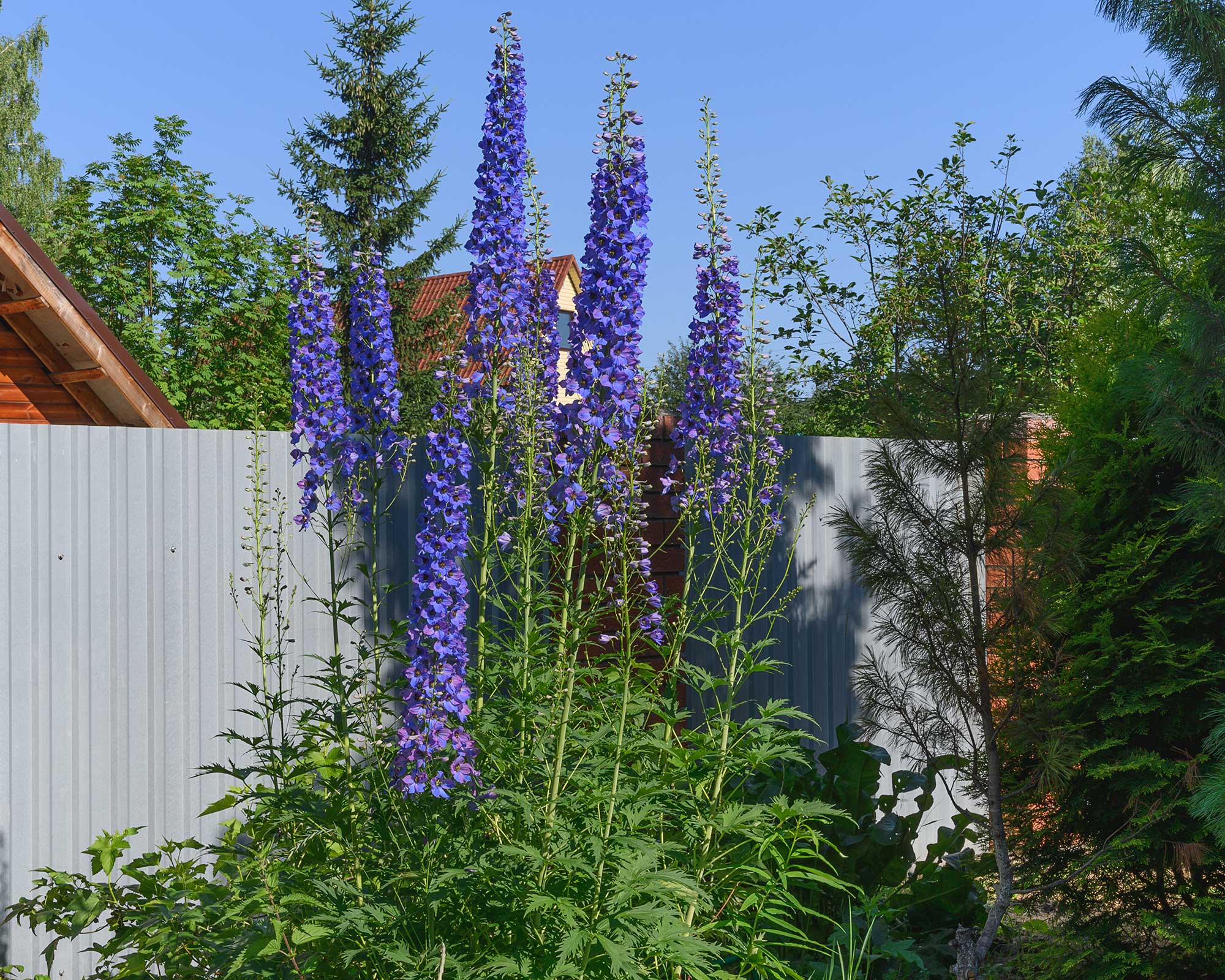
Delphiniums will grow really tall when not pruned back
Pruning delphiniums in 5 easy steps
Gardening expert Ruth Hayes from Amateur Gardening offers her easy step-by-step method for how to prune delphiniums correctly.
- Take a pair of clean, sharp pruning shears, also known as secateurs in the UK. 'Clean' and 'sharp' are the keywords here as blunt cutting tools can damage the plant and if they aren't cleaned after previous use they risk spreading disease. The same advice applies when pruning roses or any other flowers.
- Cut down the entire main flower stem of the delphinium when the flowers have faded and dropped, leaving any bud-bearing side shoots in place to flower later.
- When all the flowers on a stem are spent, cut back that stem completely as far as the nearest set of leaves. This prevents the delphinium from creating seedpods, a job that uses up energy that can be put to better use by helping the plant mature for stronger growth and flowering next year.
- After deadheading the stems in early summer, feed your delphiniums with a general purpose fertilizer such as blood, fish and bone (available at Amazon) or Growmore. Fork it into the soil and water the plants well to encourage a second burst of flowering, though usually with fewer blooms, in late summer or early fall.
- You should also deadhead single-stem delphiniums once all the blooms have faded.
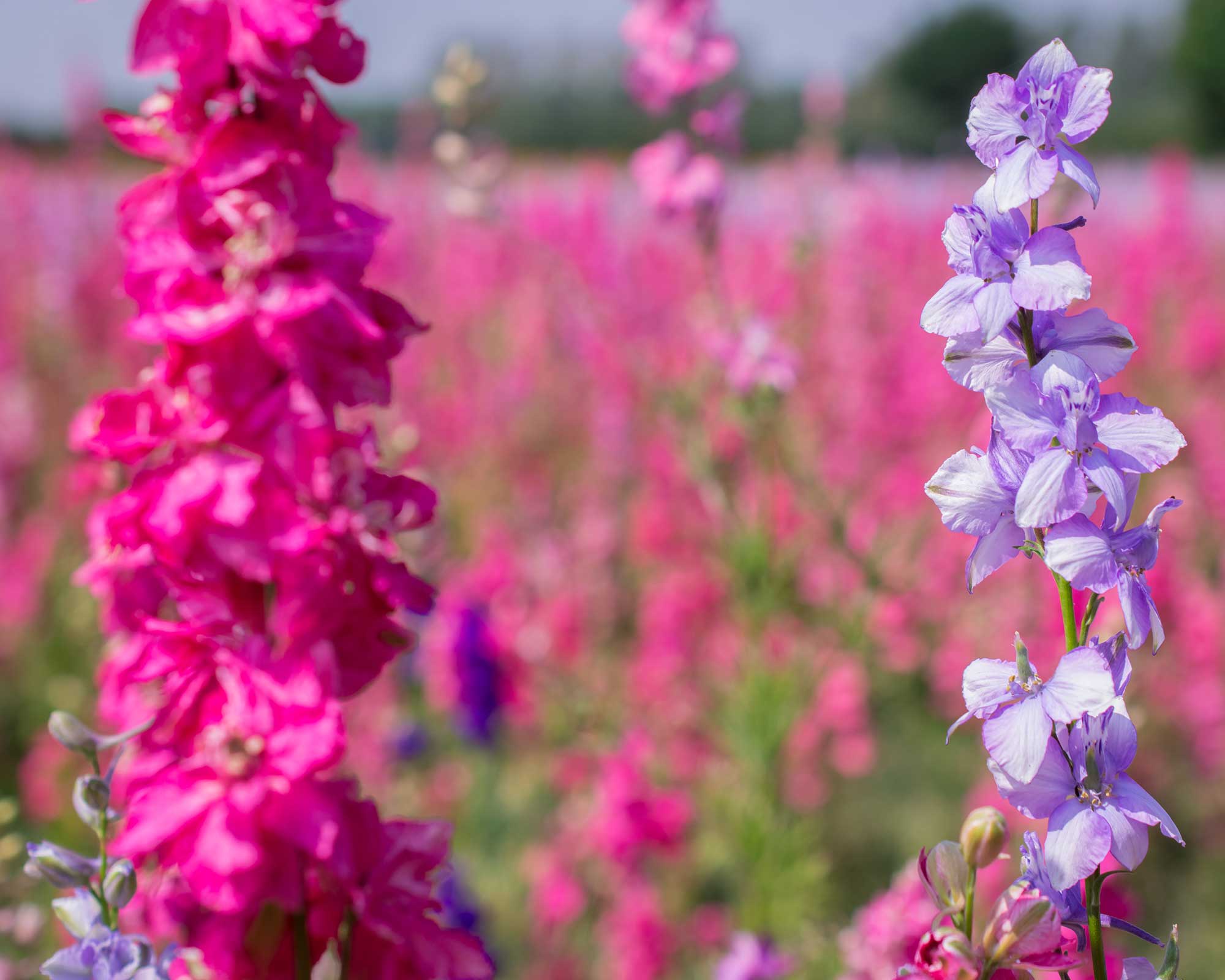
Pruning delphiniums helps new flowers to bloom
Should delphiniums be cut back for winter?
When delphiniums have finished flowering, you might question what to do. As they're perennials, delphiniums will appreciate being cut back completely in preparation for winter.
To do this, you can remove the entire spike of the plant, right down to where its leaves begin. This should be around 6-8in (15-20cm) above the soil.
Bee balm and columbine are other plants that will benefit from being cut back after the flowering season before winter.
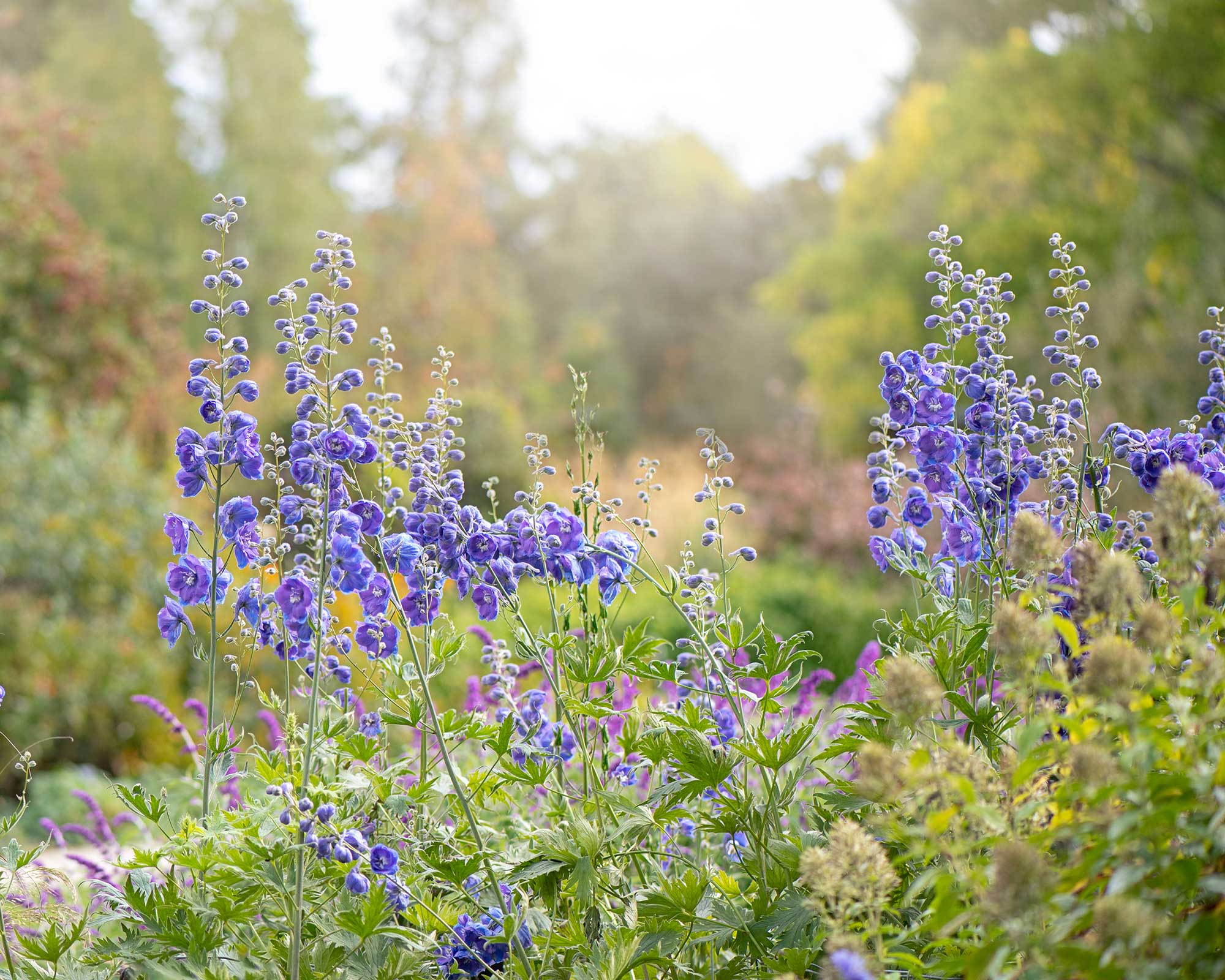
In winter, you can prune delphiniums right back to the base

Freelance writer and author Flora Baker is a keen amateur gardener and houseplant enthusiast. Her small garden in South London is a constant work in progress as she gets to grips with snail prevention, DIY trellises and what to plant in shady spots overrun with ivy.
